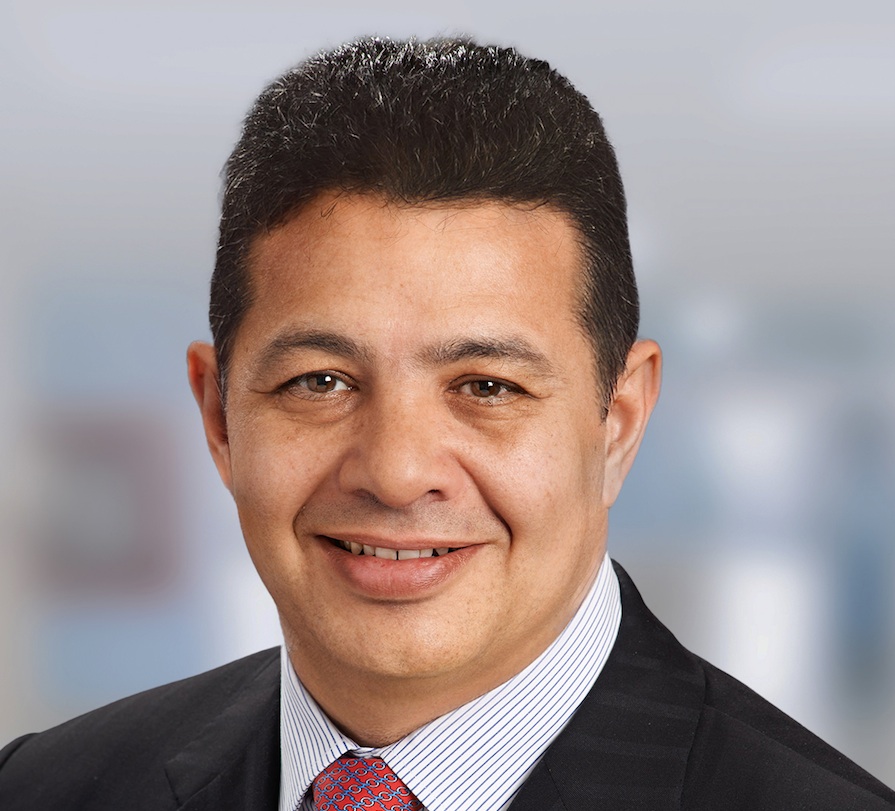
The US is still in the grip of Covid-19 but its construction industry has now recovered from the effect of 2020’s lockdowns and spending freezes, and figures from the Census Bureau show that spending growth has pretty much returned to its pre-pandemic trend line.
That said, the impression of a return to normality may be deceptive. The experience of living through the pandemic is likely to have a lasting effect on how Americans live, work and shop, and construction companies will have to adapt to this new environment. To gain an insight into what that might involve, GCR talked to Raouf Ghali, chief executive of Hill International, one of the US’ largest construction managers and a player in a number of international markets.
One positive outcome from the pandemic is that the America’s politicians have finally addressed the issue of crumbling infrastructure. The American Society of Civil Engineers estimates that an additional $3 trillion will have to be spent over the next 10 years to modernise the country’s transportation, power and water systems, and $1.2 trillion of that was provided by last November’s Infrastructure Investment and Jobs Act.
This, says Ghali, is a big turnaround after the Trump administration’s failure to keep its funding promises, which disrupted the infrastructure investment process. By contrast, the Biden act has been well received by the industry, which is now waiting to find out how the headline figure will be converted into individual projects.
“If the government wants the money to be disbursed quickly, it may be put into extensions and additions to the scope of existing contracts rather than doing whole new procurements,” Ghali says. “But even so we’re not going to really see the money flowing through communities until the latter part of 2022.”
• Hill International will give in-depth insights into the impact of the bipartisan infrastructure bill at the free, online Global Construction Summit on 23 February. For details, click here
The federal money, which will be increased 20-30% by local government spending, will add $284bn to surface transportation spending, of which $110bn will go on roads and bridges, $66bn on rail and $42bn on air and sea ports. Here, Hill stands to benefit from a number of projects, such as its role on the Amtrak Gateway programme to upgrade the US’ busiest rail corridor between Newark in New Jersey and Penn Station in New York City. Ghali adds that aviation is likely to be a particularly hot sector as the federal money will add to a renewal of the spending that was suspended during the early days of the pandemic, when the entire sector was almost entirely shut down.
Inevitably, the increase in demand will run up against capacity constraints in the labour market and supply chains, but Ghali is relatively sanguine about this. He says the rash of consolidations in the US consultancy sector had led to cuts in payrolls, and this will make recruitment easier than it might have been for the next year – after which companies probably will have to work hard to staff their new and expanded projects.
Industrial booming, commercial in limbo
The pandemic also brought a sweeping change in construction markets. In particular, the shift to home working and online shopping combined to hit the commercial sectors. “Demand for shops and offices has changed tremendously,” Ghali says. “I think there’s going to be a lot of revaluation and repositioning of assets on those two fronts. The Amazons of this world are shooting up and I’ve never seen 5th Avenue in New York with so many [storefronts] emptied out.”
By contrast, the industrial sector enjoyed rapid growth, and companies that were alive to market shifts were best able to weather the pandemic. “As far as design engineering and project management goes, the architectural engineers that were fast on their feet really benefitted. They had staff working from home and overheads were way lower and the nimble ones went to the industrial sector and performed well and actually made up a lot of the losses,” Ghali says.
One of which turned out to be Hill. “We were fortunate enough to have most of our projects deemed necessary construction, so we didn’t have a lot of stoppages. We had probably 8-10% of our workforce being furloughed. With exception of industrial, new procurement was non-existent in 2020 and we suffered headwinds in the first two quarters of 2021, then we saw a lot of activity.”

Hill reported and year-on-year increases of 34% in operating profit and 60% in net income for its third quarter, the result of wins on the Metro Gold Line project in southern California, a rail project in Kosovo (see further reading), and airport deals in Miami and Hill’s home town of Philadelphia (pictured).
New ways of working
Another significant change brought by the pandemic is, of course, the shift to home working. Here, Ghali says, Hill learned two lessons. “The first thing we found out is that there’s an importance in having an office and having people come in for mentoring and team building and well-understanding. But there’s also benefit in allowing people to work from home because we discovered that they’re just as efficient and they’re happier being in control of some of their time.”
This has led to the company striking a balance between the two. Hill’s 100-or-so offices around the world are there to establish the company’s identity and allow the face-to-face interactions that, it turns out, are essential to create the sense of belonging to a team, and in infusing that team with the company’s culture. On the other hand, there is scope to give staff in general – and millennials in particular – some flexibility in how they integrate working hours into their daily routines.
“I’ve heard my counterparts and friends in other companies – especially design engineers – saying ‘we don’t need any office, everything is working perfectly with working from home’, but I don’t see it that way,” Ghali says. “In the long term, I think we’re going to save some money on our office real estate, but we need the people who go out there [to] say ‘we are here, we are the best, we can do this’, and they need to know that the people back in the office have their back. If they never see them, they’re going to lose that feeling.”
The change to working practices is also being driven by a cluster of technologies that have been around for some time but have not necessarily become part of the industry’s normal processes. Surprisingly, perhaps, this includes building information modelling, which has been common on large projects for a decade, but has really only percolated down to smaller scale jobs over the past three years. Another labour-saving tech that is making a difference is drone inspection, particularly for “horizontal” infrastructure such as road and rail. “Rather than driving a car to do the inspection you have a drone that you fly. It takes detailed photos and you dispatch your inspectors only to the areas where there needs to be a physical survey.”
This kind of work will be made more efficient over time as better AI solutions are developed. However, the rapid growth in innovative construction tech always runs up against the need to make sure that all the relevant stakeholders and suppliers on a given scheme can use it, and the need to make sure that the major risk-bearers – that is, the employer and the contractor – are able to trust it. No easy task.
The international dimension
The US market is going to be front and centre for Hill International over the next few years – Ghali says he will be working with Todd Weintraub, the company’s chief financial officer, on a possible acquisition over the next year. But the company has a significant presence in Europe, the Middle East and North Africa and, in November, it improved its position in the Indian market with the acquisition of Mumbai cost consultant Neyo Group.
This last deal doubled the company’s presence in India and it gave it the cost expertise it had previously lacked there. Ghali says: “It gave us that expertise that we could provide to our existing clients and new clients and it gave Neyo the opportunity to go after larger projects that [it] didn’t have the backing for before. We’ve been in India for four or five years, and Neyo was a minor investment in cost terms but it was a strategically important.”
Elsewhere, Ghali says Europe is growing at 10-11% a year with nice profitability. The hottest areas here are in the south – Ghali picks out Greece and Cyprus, where Hill picked up a large resort project a few months ago – and also the Balkans, which is in line for major EU investment. Elsewhere, the Gulf region seems to be stirring after a five-year-long hibernation, thanks to a rise in oil prices and a calming of the animosity between Qatar and its southern Gulf neighbours. Then there is the African market, which Ghali says has “come up out of nowhere”. Here Egypt – where Hill is already working on a number of large projects – is taking the lead, but there is a chance that Libya, with its oil wealth and desperate reconstruction needs, will also become a major market if a political settlement can be reached between the groups competing for power.
Further reading:
Comments
Comments are closed.







Well, that is a positive news that will cherish the global economy and an insightful inspiration for new businesses to be developed.
Wishing Hill International all the best worldwide.
Thanks Raouf Ghali and best regards